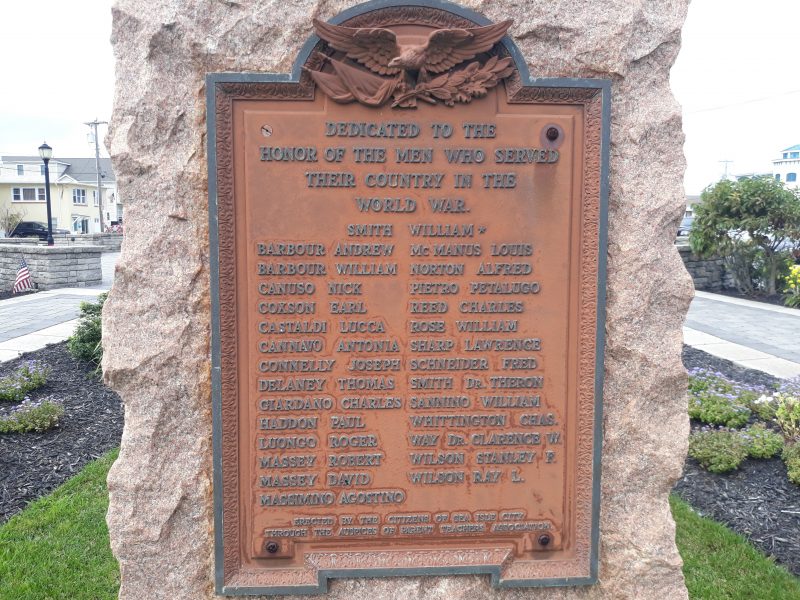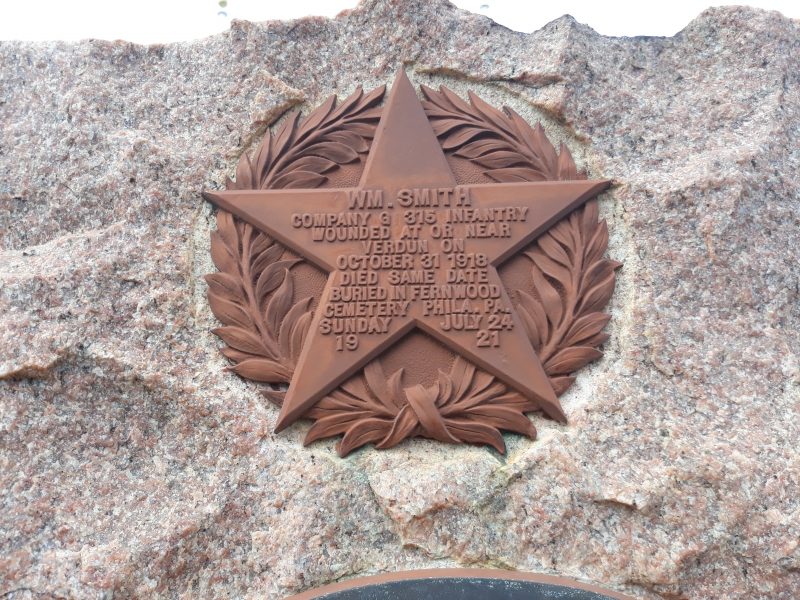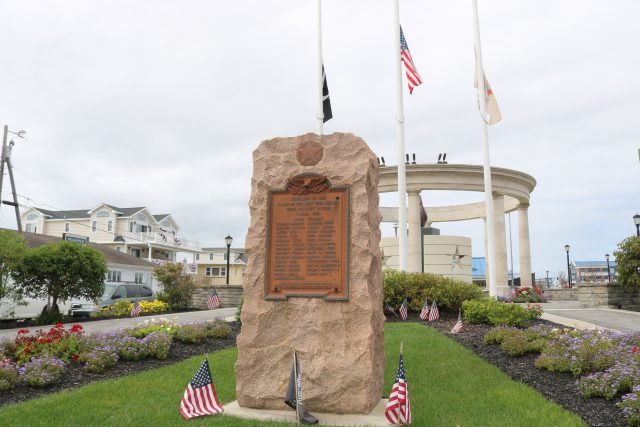By DONALD WITTKOWSKI
It became known as the Great War and the “war to end all wars.”
From 1914 to 1918, war raged across Europe’s Western Front and other parts of the globe on an unprecedented scale that would claim the lives of an estimated nine million combatants and 13 million civilians.
When the United States joined the war in 1917, more than four million Americans entered military service. Twenty-eight of them were from Sea Isle City or had ties to the town. One of them was killed in battle.
The names of the 28 men are inscribed on a pink granite monument that stands in the middle of downtown in Sea Isle’s Veterans Park. The approximately 7-foot-tall edifice, overlooking Landis Avenue near John F. Kennedy Boulevard, appears to be in pristine condition despite its age, but even local historians know little about it.
The monument was apparently erected shortly after the war, either in 1919 or 1920, according to records on file with Sea Isle’s VFW Post 1963. Tim MacAleer, the post’s vice commander, said he found a handwritten note scribbled on a Veterans Day pamphlet that suggests the monument probably dates to late 1919.
“This monument honors our combat veterans who served their country,” MacAleer said of the 28 men from Sea Isle.

The New Jersey Historic Preservation Office has a description and a picture of the monument in its registry.
It is adorned with an ornate bronze plaque topped by a decorative eagle with its wings fully extended. An inscription on the plaque says, “Dedicated to the honor of the men who served their country in the World War.” Underneath those words are the names of the 28 men.
Another inscription at the bottom of the monument reads, “Erected by the citizens of Sea Isle City through the auspices of the Parent Teacher Association.”
Perhaps the most striking feature of the monument is a five-point bronze star, located at the very top of the granite block, in honor of William Smith, who was killed in the war.
Encircled by a memorial bronze wreath, the star includes an inscription noting that Smith died of wounds suffered in battle in or near Verdun, France, on Oct. 31, 1918, less than two weeks before the war ended on Nov. 11.
His remains were repatriated to the United States for burial at Fernwood Cemetery near Philadelphia on July 24, 1921, the monument says.

In honor of his death, Smith is also listed first among the 28 names inscribed on the monument’s bronze plaque. Also among the names is Dr. Clarence W. Way, who, along with his father, Dr. Eugene Way, would become the most prominent physicians in Sea Isle. Together, they served the city for over a half century, according to the Sea Isle City Historical Society and Museum.
Although the monument’s history may have largely been lost over the years, the memorial ensures a lasting tribute for Smith, Dr. Clarence Way and the other World War I veterans from Sea Isle.
The names on the monument are as follows:
William Smith, Andrew Barbour, William Barbour, Nick Canuso, Earl Coxson, Lucca Castaldi, Antonia Cannavo, Joseph Connelly, Thomas Delaney, Charles Giardano, Paul Haddon, Roger Luongo, Robert Massey, David Massey, Agostino Massimino,
Also, Louis McManus, Alfred Norton, Petalugo Pietro, Charles Reed, William Rose, Lawrence Sharp, Fred Schneider, Dr. Theron Smith, Willian Sannino, Chas. Whittington, Dr. Clarence W. Way, Stanley F. Wilson and Ray L. Wilson.








